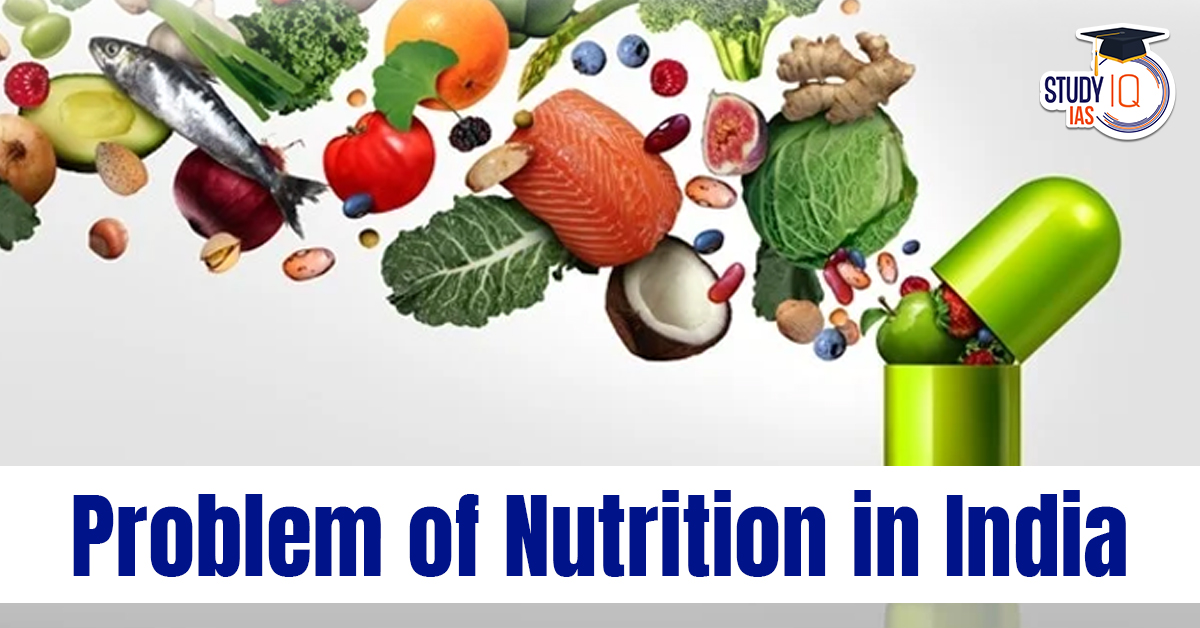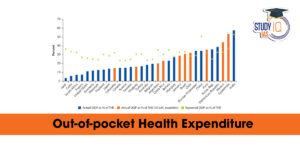Table of Contents
Context: Although health was not a priority in Budget 2025, the increased allocations for Saksham Anganwadi and Poshan 2.0 suggest a stronger focus on nutrition in the coming financial year. However, it remains uncertain whether this will effectively address India’s nutrition challenge.
Challenges Associated with Nutrition in India
- Narrow Policy Focus: Nutrition policy primarily targets malnutrition among women and children, neglecting other groups such as men, senior citizens, and non-reproductive age women.
- Lifestyle-induced non-communicable diseases (NCDs) like diabetes and hypertension are not adequately addressed under nutrition programmes.
- High Malnutrition Rates:
- 36% of children under five are stunted.
- Only 11% of breastfed children (6–23 months) receive an adequate diet.
- 57% of women (15–49 years) are anaemic.
- Rising Lifestyle-Induced NCDs:
- 24% of women and 23% of men in India are overweight or obese.
- 14% of the population takes medication for diabetes.
- Limited Reach of Existing Schemes: Poshan 2.0 and Saksham Anganwadi focus mainly on take-home rations and supplementary food.
- They target aspirational districts and the northeastern region, reinforcing the perception that malnutrition is a regional issue.
- Inadequate Primary Health Infrastructure: Health and Wellness Centres (HWCs) are unevenly distributed, with some rural areas having higher coverage than urban areas.
- Nutrition services in HWCs are inconsistent and poorly implemented.
- Lack of Dedicated Nutrition Staff: HWCs lack dedicated staff for delivering nutrition services.
- Nutrition forms only a small part of the responsibilities of multi-purpose health workers.
Ways to Strengthen Nutrition in India
- Broaden the Scope of Nutrition Policy: Expand focus beyond women and children to include men, senior citizens, and individuals with lifestyle-induced diseases.
- Tackle both undernutrition (due to food insecurity) and poor nutrition (due to unhealthy diets).
- Strengthen Health and Wellness Centres (HWCs): Increase the number of HWCs, especially in urban areas.
- Equip HWCs to provide comprehensive nutrition services to all segments of society.
- Ensure HWCs provide consistent nutrition advice for pregnant and lactating mothers, children, the elderly, and those recovering from disease or trauma.
- Engage Local Resources and Institutions: Use locally available, nutrient-rich produce in supplementary nutrition programmes.
- Encourage low-cost, culturally acceptable food options for better community acceptance.
- Dedicated Nutrition Workforce: Appoint specialised nutrition workers at HWCs.
- Train staff to provide tailored nutrition advice and monitor outcomes.
- Community Engagement and Local Ownership: Involve local elites and community leaders in nutrition campaigns.
- Link nutrition practices with local cuisines to improve acceptance and adherence.
- Promote traditional dietary habits alongside modern nutrition advice.
- Expand and Diversify Nutrition Programmes: Develop targeted nutrition programmes for lifestyle diseases like diabetes and hypertension.
- Offer school-based nutrition education and expand mid-day meal programmes.


 Out-of-Pocket Health Expenditure, Reason...
Out-of-Pocket Health Expenditure, Reason...
 Treasury Bills (T-bills): RBI Cuts Holdi...
Treasury Bills (T-bills): RBI Cuts Holdi...
 Fisheries Sector in India, Current Statu...
Fisheries Sector in India, Current Statu...

























